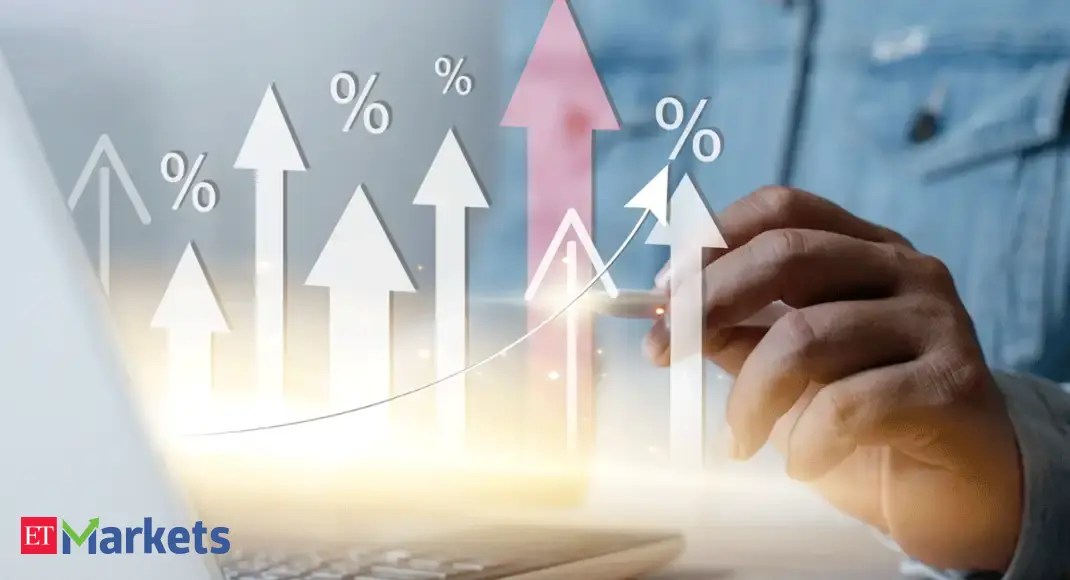As global markets navigate a fresh wave of volatility—triggered by shifting geopolitical tensions and macroeconomic uncertainty—Ajay Lakhotia, Founder & CEO of StockGro, urges investors in their 30s and 40s to stay calm and focused on long-term asset allocation.
In an exclusive interview with ETMarkets, Lakhotia shares his ideal portfolio mix for this age group, highlighting a 50% allocation to equities, 20% to gold, 10% to REITs or international funds, and 20% to debt instruments.
He believes this approach balances growth potential with risk management, especially in an environment shaped by event-driven market swings rather than structural weakness. Edited Excerpts –
Q) Thanks for taking the time out. We are seeing some volatile swings in the markets, thanks to the back-and-forth from Trump on tariffs and now some geopolitical concerns amid tensions between India and Pakistan. How are you looking at all this?
A) Haven't we been in a volatile market since covid?
From lockdowns to the Russia-Ukraine War, to change in governments in the UK and US, to stress in the middle east - there has been some news of uncertainty almost every quarter.
Yes, we’re currently navigating through an unprecedented period - both on the geopolitical and macroeconomic front.
The back-and-forth on tariffs from the U.S., especially with Trump’s return to headlines, adds to the volatility in the market. At the same time, tension between India and Pakistan creates further uncertainty.
At StockGro, we believe this is a classic case of event-driven volatility, not a structural breakdown. History tells us that markets often overreact to geopolitical headlines in the short term but tend to recover as the dust settles and it becomes the new normal
For investors, this is a time to stay disciplined, and not react. We're advising our community to use this phase to re-evaluate risks and avoid panic-selling.
If anything, volatility creates opportunities - especially in fundamentally strong businesses temporarily beaten down by sentiment.
For traders, this is an excellent opportunity to make the most of the swings while staying cautious about their overall risk-appetite.
Q) It looks like we have entered a low-interest-rate environment. What should the asset allocation strategy be for an individual in the age bracket of 30–40 years?
A) In a low-interest-rate environment, the key for an average 30–40 year old would be to focus on growth sectors which can leverage the favourable interest rate. The ideal sectors would be Defense, Infrastructure, Construction, Real Estate and Manufacturing.
A generic portfolio combination would be:
50% in equities for long-term compounding : mix of large and mid-caps.
20% in debt for stability : PPF, short-duration funds.
20% in gold as a hedge and diversifier.
10% in REITs or international funds for better diversification.
The goal is to stay invested, rebalance annually, and not chase short-term noise.
Q) What is your take on the results that have come out from India Inc., and what are your expectations for the next few quarters?
A) The recent results from India Inc. have been a mixed bag. Domestic sectors like auto, capital goods, and BFSI are broadly beating street estimates, while export-oriented segments like IT remain under pressure.
Going forward, we can expect muted to moderate earnings - leading to growth contribution primarily from domestic demand and government spending. Stock selection will matter more than sector calls - this is a bottom-up market now.
Q) Gold is back in the limelight as it hit the Rs 1 lakh mark in the physical market. Is it no longer just a safe haven but also a money-making machine? It has been outperforming equities for the past couple of years.
A) Gold has clearly evolved beyond just being a safe haven - it’s now a serious wealth-preserving asset. Institutional investors globally have shifted to gold whenever there is a war or global crisis.
With global uncertainty, inflation concerns, and central bank buying, gold prices have outperformed equities in recent years. But the sustainability of this rally is questionable going forward.
While it shouldn't replace equities for long-term growth, ~10% to 20% allocation makes sense. It’s proving to be both a hedge and a smart tactical play in today’s market.
Q) How should one be looking at the small- and mid-cap space in FY26?
A) In FY26, the small and mid-cap space offers selective opportunities but calls for caution. Valuations in some pockets are stretched, but strong earnings and domestic tailwinds are favouring select stocks.
Investors should focus on companies with low debt, strong cash flows, and high-quality management.
This is a stock-pickers’ market - quality will matter more than momentum in the long run and relying on the right experts to spot such opportunities is of utmost importance.
Q) Where is the value in the market after the recent fall we have seen?
A) After the recent correction, value is emerging in pockets tied to domestic growth - like capital goods, banking and infrastructure / auto ancillary.
These sectors are backed by strong order books, policy tailwinds, and earnings visibility.
Investors should look beyond the index and focus on strong companies that were dragged down by sentiment but have solid long-term potential.
Q) How are FIIs viewing Indian markets? We have seen some net buying in the past few sessions, but for the month, FIIs have pulled out more than Rs 13,000 crore from the cash segment of Indian equity markets.
A) FIIs are cautiously optimistic. After heavy outflows earlier this month, recent buying shows they're re-entering selectively - driven by India's growth outlook and easing global risks.
With US Markets easing out the repo rates, we can expect more money coming into the Indian Stock Market over the next few months. But for long-term investors, this should remain irrelevant and they must focus on using the volatility to find value.
Q) Have you made any changes to your strategy or portfolio to balance out the volatility arising from external factors such as tariffs or geopolitical concerns?
A) Yes, I’ve made a few key adjustments. I’m leveraging the volatility - from tariff / geopolitical risks - to take shorter-term trades based on technicals.
Simultaneously, I’m using the profits booked earlier to enter into long-term positions where I double down on domestically driven businesses with strong balance sheets.
This way, I am also getting to rotate capital from export-heavy sectors into more promising ones with better results.
(Disclaimer: Recommendations, suggestions, views, and opinions given by experts are their own. These do not represent the views of the Economic Times)
.png)
 German (DE)
German (DE)  English (US)
English (US)  Spanish (ES)
Spanish (ES)  French (FR)
French (FR)  Hindi (IN)
Hindi (IN)  Italian (IT)
Italian (IT)  Russian (RU)
Russian (RU) 








Comments